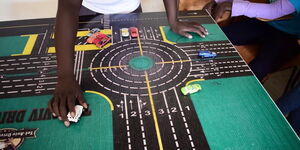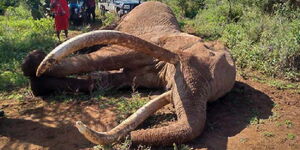For many Kenyans, the dream of parenthood may not always follow the traditional path with marriage and children.
Whether it is a last-ditch effort to be a mother or a father after years of trying, or a personal longing to open your home up for underprivileged children, the journey to adopting in Kenya is a tedious one that could take months or even years.
From background checks, home visits, and court hearings, the process is designed to protect the child’s best interests.
So, if you have ever wondered what it really takes to bring an adopted child into your family in Kenya, here is a simple guide to help you navigate the process.
Eligibility Criteria
Firstly, you have to be qualified to be an adoptive parent before kickstarting the process.
Although most people between 25 to 65 years old are eligible to adopt, there are a few limitations that are employed, including:
- A sole male applicant cannot adopt a female child.
- A sole female applicant cannot adopt a male child.
- A sole foreign applicant cannot adopt a child.
- Persons of unsound mind within the meaning of the Mental Health Act (Cap. 248).
- Persons charged and convicted by a court of any of the offences set out in the Third Schedule of the Act.
- Joint applicants who are not married to each other cannot adopt a child.
With respect to the child;
- The adoptive child must be at least six weeks old to 18 years old and declared free for adoption by a registered adoption society.
- Applicants must be at least 25 years old. If a couple is adopting, one partner must be at least 25, and the other must be at least 21.
- They have to have been under the continuous care of the applicant for a three-month bonding period.
Step-by-Step Process of Adopting a Child
Applying to a Licensed Adoption Society
You should start by registering with an adoption society licensed by the Department of Children's Services, which will tackle the assessment of your suitability through interviews, home visits, and background checks.
Once approved, the child is placed under your foster care for at least three months under supervision.
Declaration that the Child is Free for Adoption
The adoption agency you have registered with will handle this process by investigating the child's background to ascertain that the child is eligible for adoption.
If they qualify, the society issues a certificate declaring the child free for adoption.
The child is placed under the care of the applicants for the three-month bonding period at this step.
Filing a Legal Process
You may then file an adoption petition in the Children’s Court, attaching such documents as a certificate declaring the child free for adoption, a home study report, the child's birth certificate and your identification documents.
Appointment of a Guardian ad Litem
The court will then appoint a guardian ad litem or a neutral person to represent the child’s best interests during the proceedings.
Court Hearings
The High Court will then review all the reports from the adoption society, the guardian ad litem and the Directorate of Children’s Services.
The court will hear the case in chambers, ensuring confidentiality.
If the court is satisfied, it issues an adoption order.
Registration of the Adoption
Finally, the Registrar of Adoptions enters the adoption in the Adopted Children Register.
The child will then require a new birth certificate in the adoptive parents’ names.
On conclusion of the process, all rights, obligations, duties and liabilities relating to the child are transferred to the applicants as if the child were their biological child.
As there are three types of adoption – kinship adoption, local adoption and foreign adoption – there are different parameters to consider in each case.
This includes that foreign nationals may only adopt under strict conditions and with Cabinet Secretary approval.
The restriction of single adults adopting children of the opposite gender could also be lifted in special cases, like when the adoptee is a relative of the applicant.












